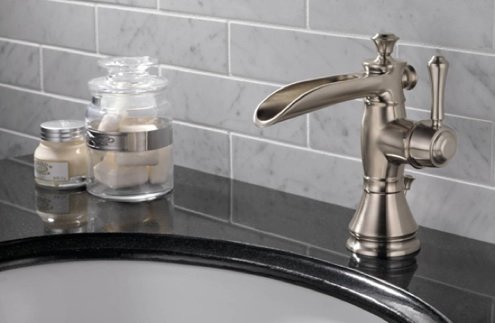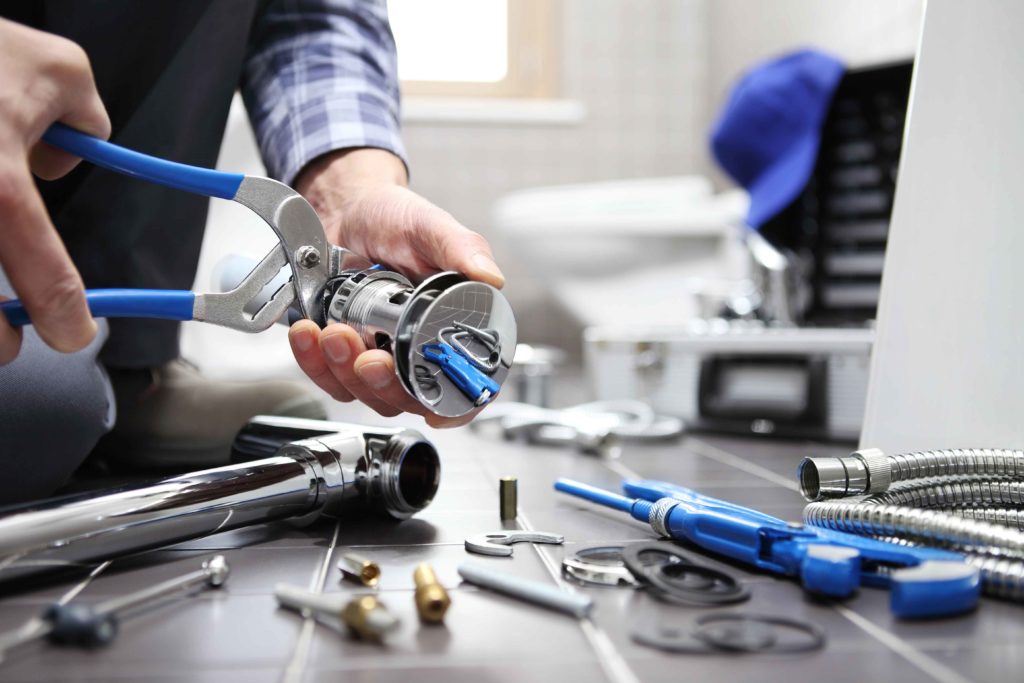Everybody will have their own unique rationale involving What Causes Leaky Faucets & How To Fix Them.

Dripping taps may feel like a small trouble, but their effect surpasses just the annoyance of the noise. From wasting water to sustaining unneeded economic expenses and health and wellness threats, overlooking a dripping faucet can cause numerous repercussions. In this post, we'll explore why it's important to address this usual house problem promptly and successfully.
Wastage of Water
Ecological Effect
Dripping taps contribute considerably to water wastefulness. According to the Environmental Protection Agency (EPA), a single tap dripping at one drip per secondly can waste greater than 3,000 gallons of water each year. This not only pressures water resources but additionally affects environments and wildlife depending on them.
Financial Expenses
Enhanced Water Costs
Past the ecological influence, dripping faucets can inflate water costs significantly. The built up waste with time translates into higher utility expenses, which might have been prevented with prompt fixings.
Possible Residential Property Damages
In addition, long term trickling can bring about harm to fixtures and surface areas bordering the faucet. Water accumulation can create discoloration, rust, and even structural problems if left unattended, causing added repair work costs.
Health and wellness Concerns
Mold And Mildew and Mold Growth
The consistent presence of dampness from a trickling tap creates a suitable environment for mold and mildew and mold growth. These fungi not just endanger interior air high quality however also position wellness risks, particularly for individuals with respiratory conditions or allergic reactions.
Waterborne Conditions
Stationary water in trickling taps can become a breeding ground for bacteria and other pathogens, boosting the risk of waterborne diseases. Impurities such as Legionella bacteria grow in stationary water, possibly causing severe ailments when consumed or breathed in.
DIY vs. Professional Repair work
Advantages and disadvantages of Do It Yourself Repair Service
While some may try to take care of a leaking faucet themselves, DIY repair services feature their own collection of difficulties. Without correct understanding and tools, do it yourself attempts can exacerbate the problem or result in insufficient repair work, lengthening the issue.
Benefits of Employing a Specialist Plumber
Working with a specialist plumber ensures that the underlying cause of the dripping tap is attended to efficiently. Plumbers have the know-how and equipment to detect and repair faucet problems effectively, conserving time and lessening the threat of more damage.
Step-by-Step Guide to Repairing a Dripping Tap
Tools Required
Before attempting to deal with a trickling faucet, gather the essential devices, consisting of a flexible wrench, screwdrivers, substitute parts (such as washing machines or cartridges), and plumber's tape.
Usual Tap Issues and Their Solutions
Determine the type of tap and the particular issue triggering the drip. Common troubles include damaged washers, rusty valve seats, or faulty O-rings. Describe producer guidelines or online tutorials for detailed guidance on repairs.
Safety nets
Normal Maintenance Tips
To avoid trickling faucets, do regular upkeep such as cleansing aerators, inspecting for leaks, and changing damaged components quickly. In addition, think about setting up water-saving devices or updating to much more efficient components.
Value of Prompt Fixes
Addressing leaking faucets as soon as they're observed protects against additional water wastefulness and prospective damage, ultimately saving both water and cash in the future.
Effect On Residential Or Commercial Property Worth
Assumption of Well-Maintained Building
Keeping a property in good condition, consisting of attending to maintenance issues like dripping faucets, boosts its regarded value and charm amongst prospective customers or occupants.
Influence on Resale Value
Characteristics with well-kept plumbing fixtures, including faucets, command higher resale worths in the property market. Attending to leaking faucets can contribute to a favorable impression throughout building assessments and settlements.
Ecological Responsibility
Specific Payment to Preservation
Taking obligation for repairing dripping taps lines up with more comprehensive efforts toward water preservation and environmental sustainability. Every person's activities collectively make a considerable impact on preserving priceless sources.
Sustainable Living Practices
By prioritizing timely fixings and adopting water-saving routines, people add to lasting living methods that benefit both present and future generations.
Final thought
Resolving a trickling tap goes beyond mere convenience; it's a vital step towards preserving water, reducing financial expenses, and securing health and home. Whether with do it yourself repair work or specialist aid, taking action to take care of dripping taps is a little yet impactful way to promote responsible stewardship of resources and contribute to a healthier, more sustainable future.
How to Fix a Leaky Faucet: Step-by-Step Repair Guide
A leaky faucet may seem like a simple annoyance, but if it's not fixed promptly, that leak could cost hundreds to potentially thousands. From water damage to mold, mildew, and high water bills, even a tiny leak can be catastrophic if left unattended. Damage like this can even affect the overall value of your home, so it's important to take the right approach for leaky faucet repair. You may need the help of a plumber in some cases, but we've got a few tips you can try on how to fix a leaky faucet before calling the pros.
Four Faucet Types
When you're learning how to fix a leaky faucet, the first step is knowing what kind of faucet you're working with! There are four common types.
Cartridge Faucets
Cartridge faucets come in one- or two-handled varieties. In one-handled cartridge faucets, hot and cold water combines in a single cartridge. In the two-handled versions, hot and cold water are controlled separately and mixed in the faucet.
Ball Faucets
Ball faucets have a single lever you push up and down to adjust the pressure and rotate to change the temperature. A slotted metal ball controls the amount of water allowed into the spout.
Compression Washer Faucets
They're the oldest type of faucet, but they're still used in many homes — especially older ones. Compression faucets have two separate handles that, when turned, raise or lower the washer that seals a water valve. This valve stops water from flowing through the faucet when it is turned off.
Disc Faucets
Disc faucets rarely need to be repaired due to their maintenance-free design. The water flow is controlled by two discs — the upper one raises and lowers against a fixed lower disc, creating a watertight seal. If your disc faucet starts leaking, you may need to replace the seals or clean residue buildup from the inlets.
Fixing a Leaky Faucet
Step 1: Turn Off the Water
Whether you're learning how to fix a leaky bathtub faucet or how to fix a leaky kitchen faucet, always turn off the water supply to your working area when you're fixing a leak. The last thing you want is a flood added to your list of things to fix.
Look for the shutoff valves below your sink or around the tub and turn them clockwise to stop the water flow. If your faucet doesn't have shutoff valves, you may need to turn off the water for the whole house. Check to make sure it's off by turning the faucet on. If nothing comes out, you're ready to start the repair.
Step 2: Take Apart the Faucet
How you disassemble your faucet depends on the type of fixture you have. You can use a flathead screwdriver to remove the caps on top of the handle or handles for cartridge and compression faucets. Inside, you should see handle screws. Unscrew these with a screwdriver to remove the handle.
Disc- and ball-style faucets will typically have an inlet screw near the handle, and removing that will reveal the interior of the faucet.
Detach the Valve Stem
For cartridge- and compression-style faucets, you'll see the inner valve stem or cartridge once you remove the faucet handles. If you have a compression faucet, unscrew the brass valve stem. If you have a cartridge faucet, pull out the cartridge. If your cartridge has been in place for a while, it may require some tools or extra force to remove it due to mineral deposits.
Examine and Replace Parts
Once you've removed the parts, check them out to confirm what needs to be replaced. You may see corroded rubber washers, O-rings, stems, or cartridges. On a ball-style faucet, check the seats and springs for damage.
If you need to repair a leaky disc faucet, check the inlet and seals on the lower disc.
Once you determine what parts must be replaced, visit your local hardware store. Bring the damaged parts with you to ensure you can purchase the correct components to replace them.
Clean Valves and Faucet Cavity
If you've removed a stem or cartridge, you may notice mineral buildup in the faucet's threads. Use white vinegar to clean the valve seat by soaking it for a few minutes, then scrub it away with a soft toothbrush and rinse with warm water. You can also clean the interior of the faucet in the same way.
Reassemble the Faucet
Once your faucet is cleaned and the required parts have been replaced, it's time to reassemble it. Put the pieces back together and slowly turn the water supply back on. Doing this slowly is crucial because too much initial water pressure can damage the new hardware you've just installed.
https://homewarranty.firstam.com/blog/how-to-fix-leaky-faucet

Do you like reading up on Why Are My Faucets Dripping (And Can I Fix It Myself)?? Create a short review down the page. We'd be pleased to hear your responses about this blog post. We are looking forward that you visit us again in the future. Kindly take the time to distribute this blog if you liked it. I love your readership.